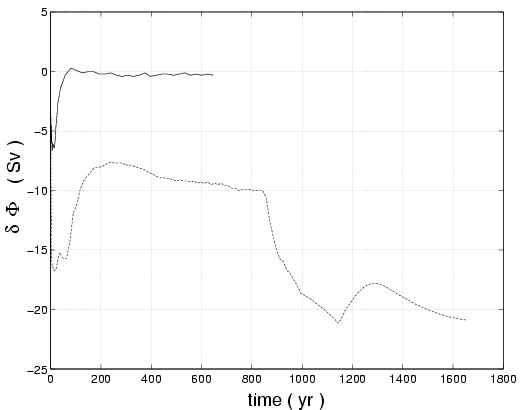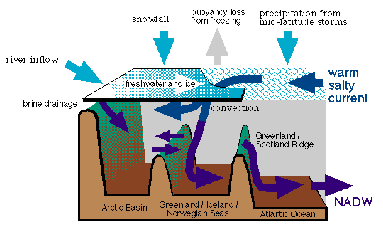

Lohmann, G., 1998, J. Phys. Oceanogr. 28, 2095-2103.
The effect of a near bottom transport scheme on the sensitivity of the thermohaline circulation is analyzed in a coupled model. In this model with idealized geometry of the Atlantic, it is shown that in the presence of a northern source of deep water, an accurate representation of the overflow process has a stabilizing effect on the thermohaline circulation for subpolar sea surface salinity perturbations. The large scale overturning circulation can be maintained in the presence of a continued deep water formation north of the sill. Experiments suggest that without a sufficient coupling across a sill in the northern North Atlantic, the response of the ocean's circulation to subpolar atmospheric variability may be too strong.
-> available as plain PostScript file (HUGE !)
Change of the maximum overturning rate in the northern hemisphere for the experiment (A) (dashed dotted line) and experiment (B) using the slope convection parameterization (solid line). The unit is Sv = 10^6 m^3 s^{-1}.
Paper with Michael Schulz:
The overflow process and deep water formation north of the Greenland-Scotland ridge affect strongly the response of the ocean's circulation to subpolar atmospheric variability. This is in particular important for the interpretation of paleoclimatic records. Abstract
Recent development of the Hadley Centre Coupled Model with BBL.
pdf-file